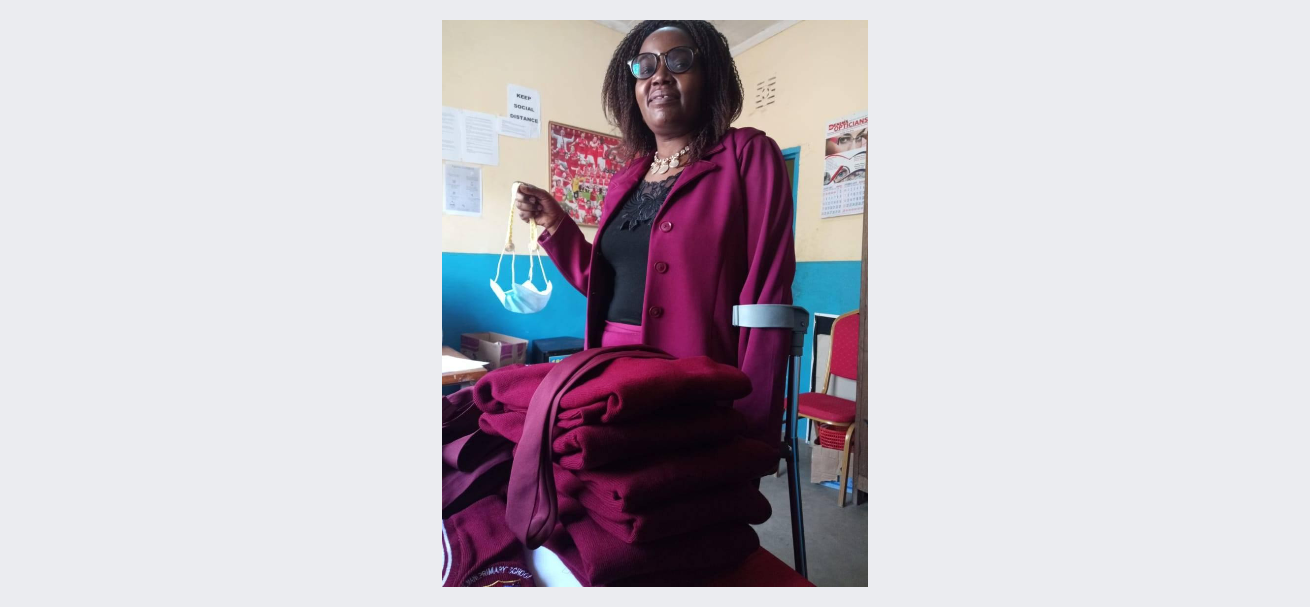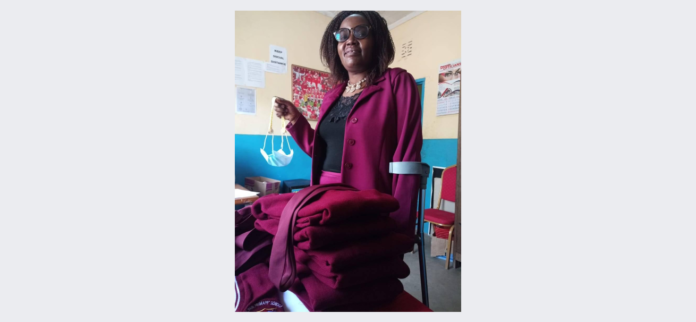By Thomas Mwiraria
Nakuru County, Kenya: Benedettah Mwangi, 40, a mom from Naivasha Kenya is disabled, and in clutches. She is fighting a rare inflammatory disease called transverse myelitis. She has battled traverse myelitis for 13 years now. The disease has caused her injury to the spinal cord with varying degrees of breathing problems, dysfunction of the system, bouts of weakness, and alterations in heart rate and reflexes.
The National Institute of Neurological Disorders and Stroke describes traverse myelitis as a neurological disorder caused by inflammation of the spinal cord, the part of the central nervous system that sends impulses from the brain to nerves in the body. The spinal cord also carries sensory information back to the brain.
Myelitis can damage the insulating material, called myelin, that covers nerve cell fibers. The journal says the four classic features of transverse myelitis are: Weakness of the legs and arms, lower back pain, or sharp, shooting sensations that radiate down the legs or arms or around the torso. Transverse myelitis can cause paresthesias (abnormal sensations such as burning, tickling, pricking, numbness, coldness, or tingling) in the legs and sensory loss. Abnormal sensations in the torso and genital region are common. Other common symptoms include an increased frequency or urge to use the toilet, incontinence, and constipation.

Due to the impacts of traverse myelitis, Benedettah has been through frequent emergency hospitalizations and jabs. She battles on, but chronic pain persists. In 2021 she wrote in her journal:
“I have done all the first phase, all those injections, all those cannulations, sometimes three in a day. What else do you expect after a collapsed immune system?… the conclusion will be given this morning on whether they can open this little so painful cyst on my ear. I understand their fears that I may not heal a wound”
Traverse myelitis, a rare condition, has weakened her immune system and now she battles more conditions. On July 29 2023 Benedettah penned in her journal.
“It’s always an achievement to have a condition in remission. I have taken tougher steroids but not for the same condition.
Today, the grade teacher and mother are more resilient, more hopeful, and optimistic.
She writes;
“If there is one thing that gives me joy is looking back and seeing how far I have come. It puzzles me and fills my heart with joy, gives me the drive to take every challenge in my stride knowing I will make it fine”
Management of traverse myelitis
The Journal of Medical Case Reports describes a case of a 17-year-old Nigerian male who was brought to Doctors- Chukwuebuka P. Onyekere & Chinonso N. Igwesi-Chidobe, with severe traverse myelitis.
Six days prior to admission the patient had complaints of jerking and inability to move the lower limb, which was followed by grade fever. At the health center 24 hours later,” he received Amatem and Neurovit Forte tablets, and intramuscular injections of Paluther and diclofenac.
“This was followed by the passage of dark-brown urine later in the day. Five days later, the patient started limping on the right lower limb. This was followed by an insidious and progressively worsening jerking movement of both lower limbs, which later spread to the entire body. The patient could not walk thereafter and preferred to lie down most times” describes the Journal.
The journal goes on to describe the case adding that the stated symptoms worsened and was advised by the physician at the outpatient to use cold compress to manage the persistent jerking movement.
“With the persistence of symptoms, the patient was brought back to the general outpatient clinic after a further 2 days. He was then placed on Redflex, pregabalin, diclofenac and Neurovit Forte tablets, and Neurogesic (topical analgesic) cream by the physician. However, he was brought to the children’s emergency ward after another 2 days with worsening fever, where he was admitted. While on admission, the patient developed high blood pressure (160/100 mmHg). He was also placed on medications for high blood pressure, infection, and inflammation by the attending medical team, including amlodipine, ceftriaxone, diazepam, phenobarbitone, dexamethasone, and tinidazole. The physiotherapy team was invited three days after his admission into the children’s emergency ward for physical rehabilitation” explains the Journal of Medical Case Reports.
Rare Diseases profile
According to the National Organization for Rare Diseases (Nord), Rare diseases are present across the medical spectrum. Some are widely recognized by name, such as cystic fibrosis, while others are less known, such as cat eye syndrome. Most cancers (all but a few types) are rare. There are rare neurological and neuromuscular diseases, metabolic diseases, chromosomal disorders, skin diseases, bone and skeletal disorders, and rare diseases affecting the heart, blood, lungs, kidneys, and other body organs and systems. Many rare diseases are named for the physicians who first identified them. A few are named for patients or even the hospitals where they were first identified.
Profile of Rare Diseases Community in America
Nord states that its Rare Diseases database has a record of 1200 rare disorders. A rare disorder is a disease or condition that affects fewer than 200,000 Americans. Cumulatively, there are more than 7,000 rare diseases affecting more than 30 million Americans.
This equates to 1 in 10 Americans, or one on every elevator and four on every bus according to the National Institutes of Health (NIH)
In the United States, a disease is considered rare if it affects fewer than 200,000 Americans. Some countries and the European Union have similar but slightly different definitions.
In Africa, there is no data on rare diseases and the number of affected people.
Profile of Rare Diseases Community in Kenya
Rare Disorders Kenya (RDK)) is a patient-led organization composed of patients, parents, and caregivers of persons diagnosed with rare diseases in Kenya. The Group aims to bring together different rare conditions and rally enough voices so as to be heard by the different stakeholders in the rare community to improve the quality of life of persons with rare diseases in Kenya.
Benedettah Mwangi is a member of RDK Community. She Journals.
“We’re that society that knows no creed, ethnicity, race, gender, or politics. We only embrace each other. It’s only among us that the world is one.
One word from each other and the next moment a hug 💙
Our introduction is not I’m the CEO or the proprietor
Ours is I have cancer, I have Lupus, I have Myasthenia gravis, I have this autoimmune disorder or rare condition. We keep each other at heart, support each other, and push each other to fight, those who leave aren’t moaned but rather celebrated; for resilience!
For them we keep speaking out loud, to create awareness, to seek a cure, to sensitively stop stigma.
We’re the most peaceful soldiers on quiet yet battlefield hardened.”
For further reading also check https://nation.africa/kenya/health/on-road-to-recovery-from-chronic-pain-and-10-years-of-misdiagnosis–3734920














